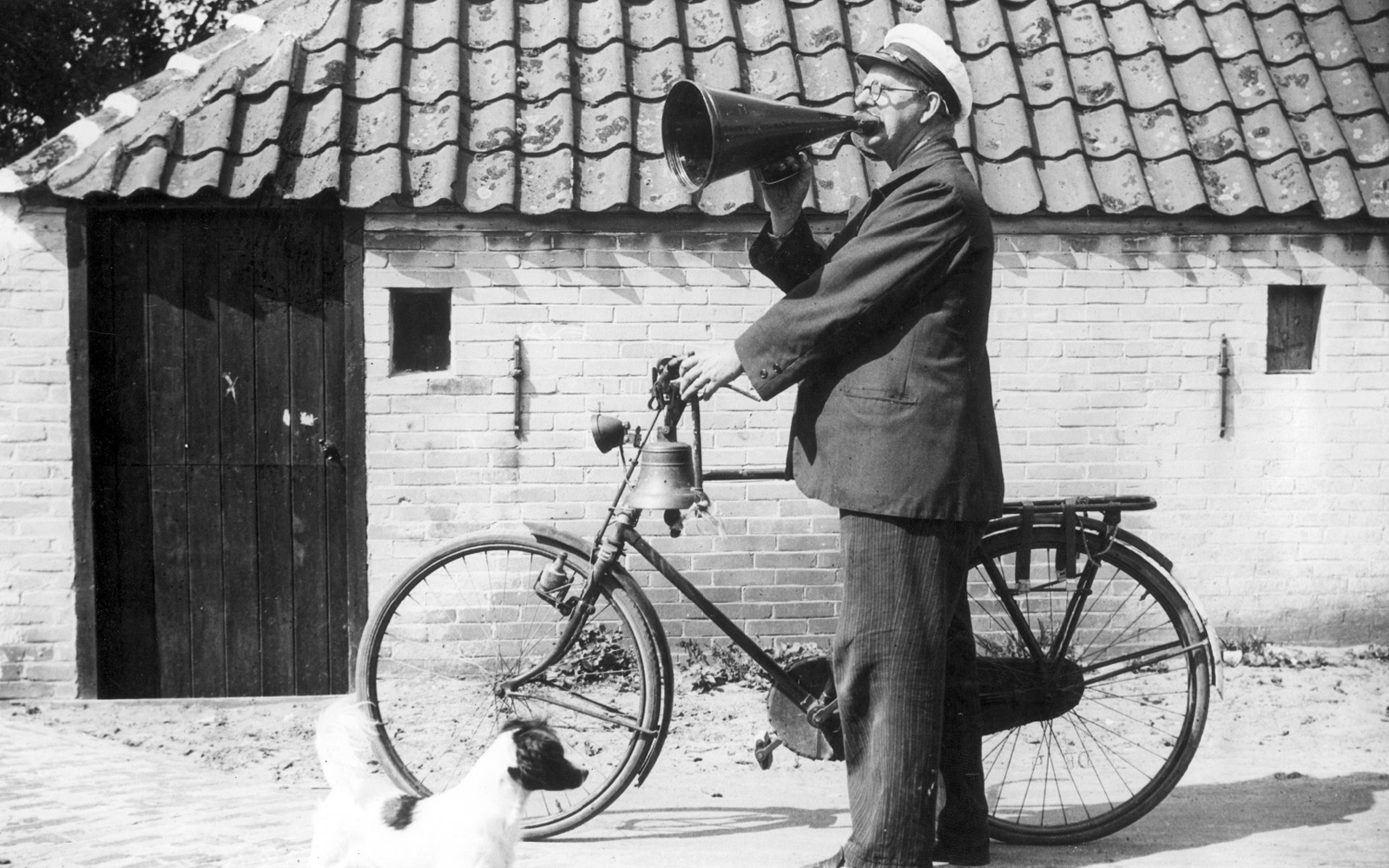
Town-crier announcing the latest news on the island of Terschelling. Netherlands, 1938 | Nationaal Archief | No known copyright restrictions
According to a recent study, 85% of Spanish social media users aged 16 to 55 follow the profiles of trend setters and opinion leaders, also known as “influencers”. Although the term originated in the marketing world, its increasing use allows us to reflect on a broader phenomenon. Below are 7 keys to understanding why this phenomenon has already revolutionised big advertising sectors like fashion and beauty.
Now that information overload puts us at risk of infoxication, culture appears to be more accessible than ever. With the digital revolution, everything is just a few clicks away. That goes for culture too. But the revolution is not just changing access, it also affects who does what: creators and consumers have merged. Old roles die away and new figures emerge, as in the case of influencers. Influence marketing is the disruptive, digital version of recommendation, with its own rules and distinctive dynamics. It operates in a world of knowledge creation in all directions, where distributed creation opens up new opportunities and new channels for culture and for knowledge dissemination.
Influencers are opinion leaders
Imagine for a moment that all the information circulating on the internet is a vast, dense network of freeways of different sizes and speeds, shooting off in all directions. Millions of photos and ideas flow through the net every second, making it impossible for us to sift what interests us from what doesn’t. So for users, a trendsetter is like headlights that shed light on the vast expanse of information on the internet. And for brands, entities, and organisations, they are more like traffic lights that act as a lure to redirect traffic towards their websites.
They break traditional hierarchies and verticality
Influencers operate in a two-way communication model that is much closer to the kinds of social organisation we are moving towards. There is no longer a one-way, direct communication with no feedback. Instead, communication generates dialogue among users, citizens, consumers, readers and experts. This feedback often takes place through the opinion leaders or the community that springs around them. The idea of consumers as passive agents in the recommendation process has been replaced by a model in which they have the option of participating through content, comments, “likes”, retweeting, and sharing on various kinds of media.
They create content based on emotions
Beneath the natural, spontaneous spirit of this kind of dynamics there is a whole complex structure based on presenting a message in a simple, friendly way, often in the form of a story told in the first person. In the post-truth era facts are no longer all-important, and users’ attention is captured by emotions and values. We are thirsty for experience, rather than information as such. Particularly in the case of audiences of Millennials, who seek unique, different experiences. Consumers want to emotionally or sensorially explore things that truly shake off indifference.
They use empathy to connect
Another revolutionary aspect of digital revolution is the fact that strangers can connect and speak to each other directly. Empathy is a catalyst, and the open intimacy of social media provide a sense of conversation or exchange “among equals”. The opinions of others are more important to us than what an actual brand might say or tell us about one of its products. In fact, 92% of social media users are more likely to trust content produced by other users than traditional advertising.
The digital environment allows us to generate and share individual experiences, so that they become collective. We are all swayed by the opinions of others on the net, because whenever we need information we look for opinions or forums of people who have used a service or product we are considering.
This is linked to the concepts of trust and credibility, which are essential elements in the decision to dedicate some time to reading particular content, or to spend money, even if the amount is small, on some specific product. The opinions of peers can provide that final little impetus that helps us decide whether something is worthwhile or not.
The connection with influencers is also determined by their characteristics: the more similar they are to users (in terms of gender, age, and also values), the stronger their potential to generate empathy and identification.
They influence without being invasive
Influencers are about persuasion rather than invasive suggestion. Influencing often goes hand in hand with “native advertising”, which is organically integrated into the content, without interrupting the user’s experience of what he is seeing or listening to. According to a study by MDG, 70% of users prefer to discover new ideas, products or events through content rather than advertising or other means. This system also bypasses ad blockers, given that the whole point is not to be seen as separate, commercial, sponsored content. It is the antithesis to the blocks of ads on TV that literally cut the flow of the shows that viewers are watching.
They are gurus of virtual communities
The power of influencers does not lie in themselves alone. Their reach largely depends on the community that they create or form part of. On one hand there is the so-called “network effect”, according to which value increases in line with the number of users. Although the quantitative aspect is certainly important, the qualitative side makes all the difference. If an influencer is part of a community in which there are other influencers, the probability that their message will spread exponentially, or even virally, will be much greater. Similarly, it is important that the community of followers, users, and potential members participates actively, especially by sharing and spreading the content. A message that does not generate reactions when it is sent is probably a sterile communication.
Everyone can be an ambassador
According to the journalist Kosha Gada, the democratisation of the Olympus of celebrities is another totally radical change. While traditional marketing relies on famous and familiar faces from the worlds of sports and show business, you can now be an influencer without being a celebrity. This opens up the opportunity for anybody to become the ambassador of an idea, a brand, or a movement. Organisations detect when a social media user is influential and has a certain critical mass.
And although it is not exactly a profession, being an influencer can become a remunerated way of life. Payment depends largely on the size of the audience (measurable according to number of followers, number of hits, etc.) and particularly on the capacity to make “noise”.
New platforms are now emerging that may become “influencer agencies”, or in other words, intermediaries for the intermediaries. For curiosity’s sake, you can calculate how much one of your tweets is worth, based on your profile and other public data on the characteristics of your followers.

CC BY Alan O’Rourke
The influencer tsunami is a phenomenon that should not be ignored, because it is here to stay and its importance is on the rise. It generates a movement and a flow of information that takes advantage of the network effect (added value increases exponentially with each new user). Influencers make it much easier to reach the target audience because they are an indirect but infallible way of segmenting audiences by gender, age, tastes, values and preferences. Ultimately, it is a new way of generating strategies for stimulating more and better consumption, and it is used by big brands with large budgets. But it would be a good idea for less buoyant sectors like cultural institutions to take note of the potential of the phenomenon of influencers, and to start using it.
We could start by asking: why not move towards an approach to culture that focuses more on experience and less on facts? Why not try more participatory, networked, digital formats? Why not turn museums into spaces that offer experiences that can move us and change us, so that when you leave you feel like telling all your contacts that they should go too? And while we’re at it, why not take the opportunity to ensure that events, facts, and cultural expressions of all kinds and from all periods are connected in all possible directions?



Leave a comment